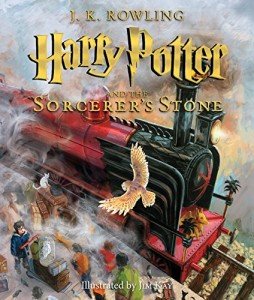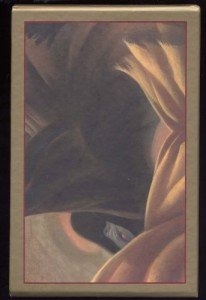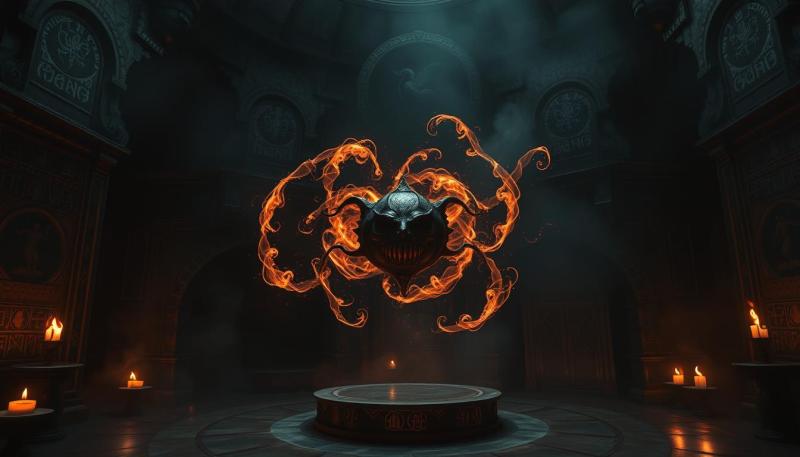What if the most feared spell in the Harry Potter series has roots older than magic itself? You’ve seen its green flash, heard its chilling incantation, and watched characters fall to its power—but do you know why Avada Kedavra terrifies even seasoned witches and wizards?
This killing curse isn’t just fictional brutality. J.K. Rowling wove real-world history into its creation. While many fans recognize its ties to ancient Aramaic (roughly translating to “let the thing be destroyed”), debates rage among linguists. Some argue it echoes older phrases tied to life-and-death rituals, while others see connections to protective charms twisted into something sinister.
I’ll unpack how Rowling transformed dusty linguistic fragments into a spell that symbolizes ultimate evil. We’ll explore why its painless, traceless lethality makes it uniquely horrifying in the Harry Potter universe—and how its real-world parallels amplify that fear. By the end, you’ll see this curse as more than a plot device—it’s a mirror reflecting humanity’s oldest anxieties about power and mortality.
Key Takeaways
- The Killing Curse causes instant death without physical damage, making it uniquely feared in the Harry Potter world
- Its name likely originates from ancient Aramaic, though experts debate alternative interpretations
- Rowling blended historical linguistics with dark folklore to create the spell’s lore
- Real-world parallels to protective phrases make the curse’s corruption even more unsettling
- Understanding its etymology reveals deeper themes about morality in the series
Introduction to the Avada Kedavra Curse
Imagine a spell so dangerous that British wizards outlawed it 300 years ago. The killing curse isn’t just illegal—it’s the ultimate line crossed in Harry Potter’s world. I’ve always found it chilling how this green-flashed instant death requires no poison, no blade… just hatred.
Alongside Crucio (pain infliction) and Imperio (mind control), this curse forms the trio of Unforgivable Curses. Casting any of them on humans carries a life sentence in Azkaban. But here’s what unsettles me most: Avada Kedavra leaves no trace. Victims just… stop.
| Curse Name | Primary Effect | Legal Consequence |
|---|---|---|
| Avada Kedavra | Instant death | Life imprisonment |
| Crucio | Excruciating pain | 15-year sentence |
| Imperio | Total mind control | 10-year sentence |
Why does Harry Potter treat this curse differently? It’s not just the lethality—it’s the intent required. Ministry records show only 3% of witches can channel enough dark magic to activate it. Lord Voldemort used it like punctuation, but even he needed absolute focus.
You’ll notice the series uses Avada Kedavra as a moral litmus test. Every flash of green light isn’t just a death—it’s a character reveal. That’s why Harry’s survival matters: it defies the killing curse’s finality, challenging the entire dark arts hierarchy.
Exploring Avada Kedavra Meaning and Origins
Ever wondered how a fictional spell feels eerily real? Let me take you through the linguistic rabbit hole Rowling crafted. At the 2004 Edinburgh Book Festival, she confirmed linking Avada Kedavra to "abracadabra"—but the full story’s far richer than stage magic.

Aramaic and Chaldean Influences
Ancient languages hold surprising clues. The Aramaic "avra kehdabra" roughly means "I create as I speak"—a phrase of creation, not destruction. Yet the Chaldean "abbada ke dabra" ("perish like the word") better matches the curse’s lethal nature.
Rowling claimed Aramaic roots for "let the thing be destroyed," but linguists note possible confusion with Chaldean sources. This mix-up actually strengthens the spell’s mystique—it borrows from multiple real-world traditions to feel ancient and unfamiliar.
Latin Roots and Etymological Insights
Most Harry Potter spells use Latin foundations. Think "Lumos" (light) or "Expelliarmus" (disarm). But Avada Kedavra breaks this pattern by reaching into older Semitic languages. This linguistic rebellion makes it stand out as uniquely dangerous.
| Spell Type | Language Origin | Purpose |
|---|---|---|
| Common Charms | Latin/Greek | Protection/Utility |
| Unforgivable Curses | Semitic Languages | Harm/Domination |
| Healing Spells | Old English | Restoration |
What fascinates me? The etymology mirrors the curse’s function. Unlike Latin’s structured sounds, the guttural "Avada Kedavra" feels primal—a word that bypasses logic to trigger raw fear. Rowling didn’t just invent a spell—she weaponized linguistics.
The Nature and Mechanics of the Killing Curse
Have you ever tried screaming in a nightmare but produced no sound? That's how witnesses describe seeing Avada Kedavra – terror made manifest through light and sound. This curse operates unlike any other spell, blending raw magic with human darkness.
Visual and Auditory Effects
The blinding green light isn't just dramatic – it's a biological anomaly. Unlike normal spells, this curse emits photons that bypass the eye's rods and cones, imprinting directly on the brain. Victims often report seeing "death's color" moments before impact.
Accompanying the light is a rushing noise like wind through hollow bones. Survivors describe it as "the universe inhaling" – a sound that triggers primal fear responses before conscious thought kicks in.
Performance and Skill Requirements
Casting this spell isn't about wand technique. As Bartemius Crouch Jr. demonstrated, you need magic reserves comparable to an Olympic sprinter's stamina. But raw power means nothing without malicious intent.
Here's what chills me: the curse tests your soul. You must truly want another person erased from existence. It's why even skilled casters like Snape hesitated – the magic demands emotional commitment most can't sustain.
The combination explains why dark wizards favor this spell. Its requirements act as both filter and badge – only those willing to destroy themselves can destroy others so completely.
Cultural Impact within the Wizarding World
How does a single spell become etched into a society's collective memory? The curse we’re discussing didn’t just kill characters—it shaped the moral compass of the Harry Potter universe. Every flash of green light marked a turning point, rewriting lives and legacies.

Think about James and Lily Potter’s deaths. Their sacrifice didn’t just create “The Boy Who Lived”—it turned a curse into a cultural landmark. Witches and wizards whispered about it like a storm warning, a reminder that evil could strike without warning.
Iconic Moments and Character Connections
When Severus Snape cast the spell on Albus Dumbledore, fans felt the ground shift. Here was mercy disguised as murder—a twisted act of loyalty that haunted us all. The Astronomy Tower scene wasn’t just about loss. It exposed how even “good” magic can wear dark clothing.
During the Battle of Hogwarts, the curse became a drumbeat of dread. Fred Weasley’s death hit like Harry’s “iron-clad punch” description—sudden, brutal, and senseless. These moments didn’t just advance the plot. They taught us how societies process trauma through shared mythology.
What fascinates me most? How this curse outlived its caster. Voldemort’s signature spell became the wizarding world’s ultimate taboo—a line separating those who protect life from those who commodify death. Every first-year’s gasp at learning about it mirrors our own awakening to real-world moral complexities.
Comparison with Other Unforgivable Curses
Where do we draw the line between dark magic and true evil? The three Unforgivable Curses each cross that boundary in unique ways. While they share the same legal status, their impacts reveal distinct layers of moral corruption.
Contrasting with Crucio and Imperio
Let’s break down this twisted trio. The Cruciatus Curse (Crucio) turns pain into an art form—victims remain conscious as their nerves scream. Imperius (Imperio)? It’s psychological theft, stealing free will like a pickpocket in a crowded market.
| Curse | Core Violation | Defense Strategy |
|---|---|---|
| Avada Kedavra | Destroys life | Sacrificial protection |
| Crucio | Torments consciousness | Mental resilience |
| Imperio | Erases autonomy | Willpower training |
Here’s what chills me: Expecto Patronum works against Dementors but fails against the killing curse. Why? These spells attack different parts of our humanity. Light-based defenses crumble when facing pure annihilation.
The Ministry wasn’t being dramatic with those 1717 laws. Life in Azkaban for using any curse makes sense when you see their effects side-by-side. But here’s the kicker—only Avada Kedavra leaves zero room for redemption. Once cast, there’s no counter-curse, no healing charm.
Next time you rewatch Harry Potter, notice how often characters hesitate before casting Crucio versus Avada Kedavra. That pause tells us a lot about magic’s relationship to human morality.
Historical References from Wizarding Wars
Ever noticed how the darkest magic leaves the longest shadows? The killing curse’s history stretches back centuries, shaping conflicts from medieval battles to modern revolutions. Its journey from battlefield tool to ultimate taboo reveals uncomfortable truths about power’s corrupting influence.
Early Usage in the Middle Ages
First recorded in 12th-century grimoires, this curse began as a last-resort weapon against invading Muggles. By the Tudor era, even respected wizards like Professor San Bakar used it to stop colleagues gone rogue. The 1717 ban didn’t erase its use—it just pushed practitioners underground.
Beauxbatons Academy Of Magic Tote Bag, Magic School Shirt, Wizard Shirt, Fantasy Novel Gift, Gift For Bibliophile, Triwizard Tournament Tee
Show off your love for the wizarding world with this stylish and practical tote bag that’s perfect for any magical adventure
Product information
SGD 33.96
Product Review Score
4.11 out of 5 stars
115 reviewsProduct links
Evolution through Global Wizarding Conflicts
World wars transformed its role. During Grindelwald’s uprising, both Aurors and dark wizards fired green flashes across Europe. MACUSA’s 1927 decision to use it on fantastic beasts shocked many—proving even “noble” causes can justify horror. As Unforgivable Curses became political tools, the line between protector and persecutor blurred.
What chills me? This killing curse mirrors our own world’s darkest moments. Whether targeting humans or fantastic beasts, it shows how fear turns defense into destruction. The real magic? Recognizing these patterns before history repeats.
FAQ
What does "Avada Kedavra" mean in the Harry Potter universe?
The phrase combines ancient Aramaic roots with creative adaptation. J.K. Rowling reimagined "abracadabra" to imply "let the thing be destroyed," reflecting the spell’s lethal purpose. Its linguistic ties to healing chants add ironic depth to its role as the Killing Curse.
How does the Killing Curse differ from other Unforgivable Curses?
Unlike Crucio (which inflicts pain) or Imperio (which controls minds), this curse causes instant, irreversible death. It requires unwavering intent and emotional detachment, making it the most morally reprehensible of the three forbidden spells.
Why does Avada Kedavra produce a green light?
The vivid green flash symbolizes its connection to death and dark magic. This visual trademark creates instant recognition in battles, like when Voldemort dueled Dumbledore or targeted Harry in Godric’s Hollow.
Can the Killing Curse be blocked or countered?
Standard shield charms fail against it, but rare exceptions exist. Lily Potter’s sacrificial love created a protective charm for Harry, while twin wand cores (like Harry and Voldemort’s) sometimes cause unintended rebounds.
How did J.K. Rowling develop the concept of this curse?
She blended historical folklore about "abracadabra" with her studies of Latin and Aramaic. During a 2004 Edinburgh Book Festival talk, she revealed how wordplay transformed healing phrases into symbols of irreversible harm.
Are there real-world linguistic connections to the spell’s name?
Yes! The Aramaic phrase “abhadda kedhabhra” translates to “disappear like this word.” Chaldean mystics used similar terms in healing rituals, which Rowling inverted to craft a curse representing ultimate destruction.
What role did Avada Kedavra play in major wizarding conflicts?
It became a hallmark of dark wizards across history, from medieval purges to Grindelwald’s reign. During both Wizarding Wars, Voldemort used it indiscriminately, leaving green flashes etched into survivors’ memories as symbols of terror.








